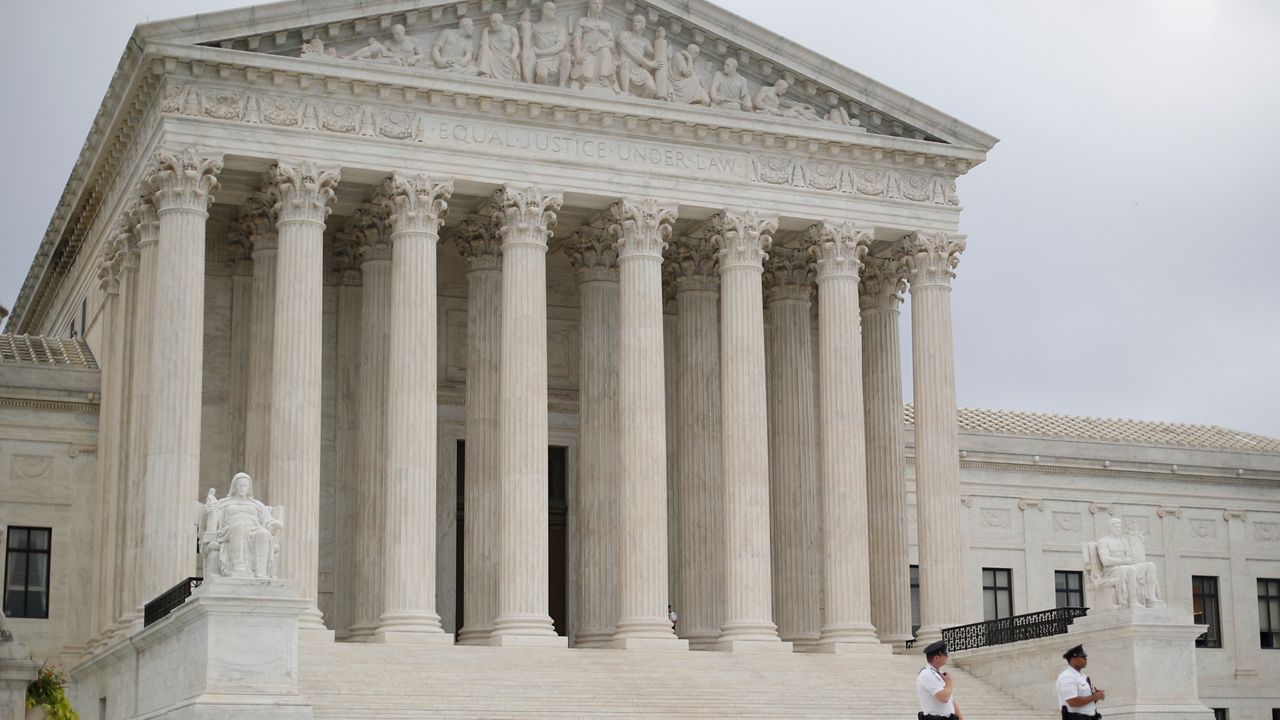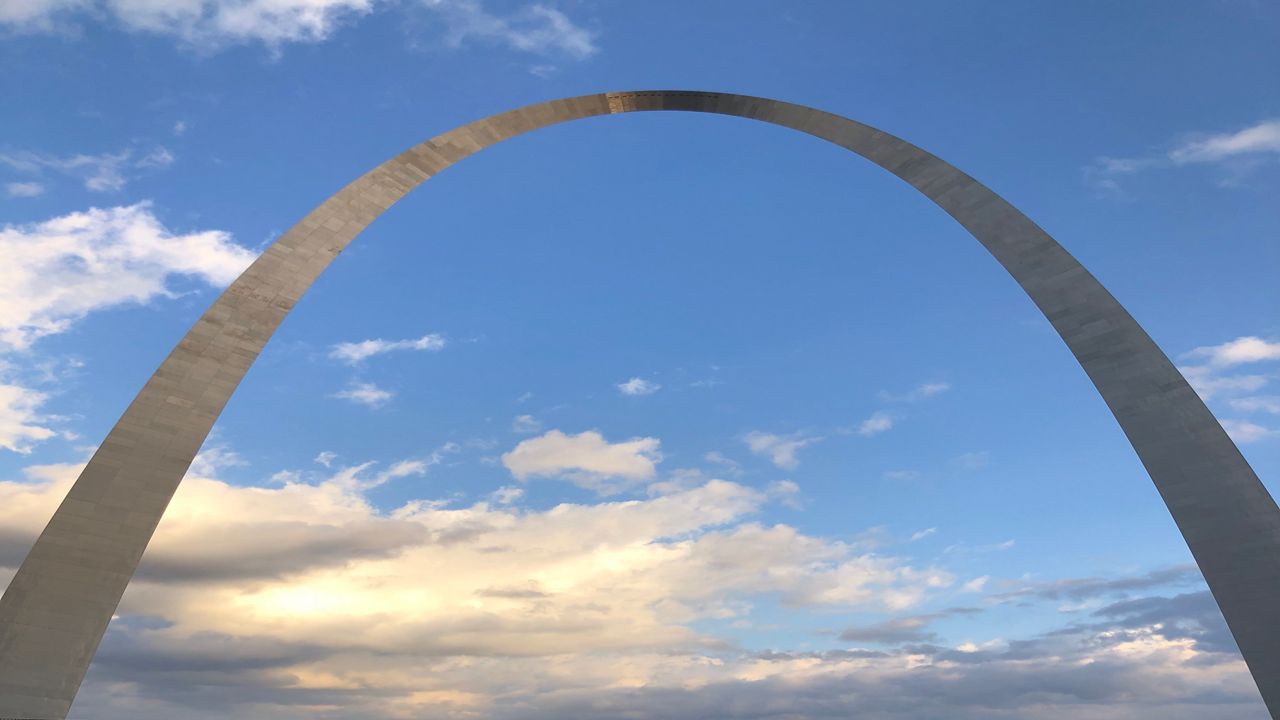WASHINGTON — As schools across Missouri, Illinois and the rest of the nation weigh Thursday's Supreme Court decision striking down affirmative action in college admissions, Missouri Attorney General Andrew Bailey says the ruling extends beyond higher education.
The court's conservative majority declared race cannot be a factor in admissions, forcing institutions of higher education to look for new ways to achieve diverse student bodies. In a pair of rulings, it also overturned admissions plans at Harvard and the University of North Carolina, the nation's oldest private and public colleges, respectively.
The decision immediately prompted reaction from both sides of the political spectrum as schools weighed what the rulings mean.
Missouri Attorney General Andrew Bailey announced that he’d sent letters to leaders of the state’s educational institutions, as well as St. Louis Mayor Tishaura Jones and Kansas City Mayor Quinton Lucas, saying that the Supreme Court decisions extend beyond the question of college admissions.
“Institutions subject to the U.S. Constitution or Title VI must immediately cease their practice of using race-based standards to make decisions about things like admissions, scholarships, programs, and employment, Bailey wrote. “These decisions also make clear that the Constitution prohibits more than just overt discrimination in application processes. Also unlawful is adopting a policy that is racially neutral on its face but has the purpose and effect of disfavoring applicants based on race.”
Bailey, who is running for the office in 2024 after being appointed in January, said “More than 300,000 individuals currently attend institutions of higher education in Missouri. In addition, countless Missourians are employed at or will seek employment at institutions that have adopted affirmative action employment policies. As the chief legal officer for the State of Missouri, I intend to ensure that the constitutional rights of all Missourians are protected, including those who would be harmed by race-based policies that are unlawful under the rulings issued today.”
St. Louis Mayor Tishaura Jones condemnded the Supreme Court ruling in a statement late Thursday afternoon.
"Let’s say the quiet part out loud: Today’s ruling is wrong and racist. Persistent attacks against diversity, equity, and inclusion – like the reversal of affirmative action – will turn back the clock on progress while denying equal opportunity for all. We must not be colorblind, but color-brave, and have the tough conversations about this nation’s history of suppressing marginalized communities if we want to truly move forward and build a country that works for everyone - no matter the color of your skin."
U.S. Rep. Cori Bush, D-St. Louis, a member of the House Judiciary Committee said in a statement that “Ending affirmative action in higher education—which the Court had already held to be legal—will have devastating impacts on our communities. Universities have historically denied Black, brown, and Indigenous people from accessing institutions of higher education. Affirmative action helped level the racist and uneven playing field. Colleges and universities must ensure students benefit from the diverse perspectives and experiences of qualified students from all backgrounds.”
Bush has pushed for the Judiciary Act in Congress, which would expand the Supreme Court from 9 to 13 members.
“The damage caused to Black communities by slavery and Jim Crow Laws, to Hispanics and Native Americans by a legacy of discrimination and oppression has not nearly been reversed,” Illinois Gov. J.B. Pritzker, a Democrat said in a statement that described Thursday’s rulings as archaic. “For centuries, students from historically underrepresented and underserved communities were locked out of higher education — preventing upward mobility and stunting economic development for generations to come. Affirmative action admissions practices were a critical step towards creating educational environments that are representative of our diverse nation, while righting the wrongs of our past.”
Chief Justice John Roberts said that for too long universities have “concluded, wrongly, that the touchstone of an individual’s identity is not challenges bested, skills built, or lessons learned but the color of their skin. Our constitutional history does not tolerate that choice.”
In language that could be tested moving forward, Roberts also wrote, “At the same time, as all parties agree, nothing in this opinion should be construed as prohibiting universities from considering an applicant’s discussion of how race affected his or her life, be it through discrimination, inspiration, or otherwise….universities may not simply establish through application essays or other means the regime we hold unlawful today.” President Joe Biden referenced that statement in his first public comments reacting to the ruling.
Justice Clarence Thomas, the nation's second Black justice who had long called for an end to affirmative action, wrote separately that the decision “sees the universities’ admissions policies for what they are: rudderless, race-based preferences designed to ensure a particular racial mix in their entering classes.”
Justice Sonia Sotomayor wrote in dissent that the decision “rolls back decades of precedent and momentous progress.”
Both Thomas and Sotomayor, the two justices who have acknowledged affirmative action played a role in their admissions to college and law school, took the unusual step of reading a summary of their opinions aloud in the courtroom.
In a separate dissent, Justice Ketanji Brown Jackson — the court’s first Black female justice — called the decision “truly a tragedy for us all.”
Jackson, who sat out the Harvard case because she had been a member of an advisory governing board, wrote, “With let-them-eat-cake obliviousness, today, the majority pulls the ripcord and announces ‘colorblindness for all’ by legal fiat. But deeming race irrelevant in law does not make it so in life.”
The vote was 6-3 in the North Carolina case and 6-2 in the Harvard case. Justice Elena Kagan was the other dissenter.
The affirmative action cases were brought by conservative activist Edward Blum, who also was behind an earlier affirmative action challenge against the University of Texas as well as the case that led the court in 2013 to end use of a key provision of the landmark Voting Rights Act.
Blum formed Students for Fair Admissions, which filed the lawsuits against both schools in 2014.
The group argued that the Constitution forbids the use of race in college admissions and called for overturning earlier Supreme Court decisions that said otherwise.
Roberts' opinion effectively did so, both Thomas and the dissenters wrote.
The only institutions of higher education explicitly left out of the ruling are the nation's military academies, Roberts wrote, suggesting that national security interests could affect the legal analysis.
Blum’s group had contended that colleges and universities can use other, race-neutral ways to assemble a diverse student body, including by focusing on socioeconomic status and eliminating the preference for children of alumni and major donors.
The schools said that they use race in a limited way, but that eliminating it as a factor altogether would make it much harder to achieve a student body that looks like America.
At the eight Ivy League universities, the number of nonwhite students increased by 55% from 2010 to 2021, according to federal data. That group, which includes, Native American, Asian, Black, Hispanic, Pacific Islander and biracial students, accounted for 35% of students on those campuses in 2021, up from 27% in 2010.
The end of affirmative action in higher education in California, Michigan, Washington state and elsewhere led to a steep drop in minority enrollment in the states’ leading public universities.
They are among nine states that already prohibit any consideration of race in admissions to their public colleges and universities. The others are: Arizona, Florida, Georgia, Nebraska, New Hampshire and Oklahoma.
A poll last month by The Associated Press-NORC Center for Public Affairs Research showed 63% of U.S. adults say the court should allow colleges to consider race as part of the admissions process, yet few believe students’ race should ultimately play a major role in decisions. A Pew Research Center survey released last week found that half of Americans disapprove of considerations of applicants’ race, while a third approve.









)